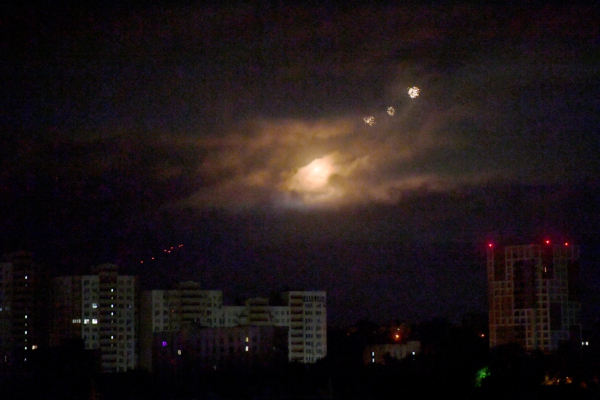Russia’s invasion of Ukraine has lasted for over a thousand days and has gradually evolved into a drone warfare. Ukrainian officials say that remote warfare, including the use of artificial intelligence, is on the rise.
According to Reuters, a Ukrainian company that produces drone signal jammers has seen rapid growth within a year of Russia’s invasion of Ukraine, with orders skyrocketing.
Yuri Shelmuk and his partners founded the drone signal jammer company Unwave last year when there seemed to be little interest in such devices. However, the company now produces 2,500 units per month, with orders fully booked and shipment dates scheduled six weeks ahead.
In the summer of 2023, following a major counteroffensive by Ukraine against Russian forces, the company experienced a surge in orders. At that time, Russian forces extensively used drones for pinpoint attacks and engaged in mine warfare and ground operations.
“The concentrated use of cheap aerial drones by Russia thwarted all of our attacks,” Shelmuk said. “Everyone understands that a new set of rules has emerged.”
Russia’s full-scale invasion of Ukraine has entered its 1000th day. This war has driven rapid development in Ukraine’s defense industry, with over 800 major defense enterprises in the country established mostly after the war.
Many companies have been founded to adapt to the rapidly changing Russo-Ukrainian conflict, including drones – initially aerial drones, as well as ground and maritime drones, anti-drone technology, and increasing use of artificial intelligence.
“Ukraine’s defense industry is currently the fastest in innovation worldwide,” said Ukrainian parliament member Halyna Yanchenko, who has advocated for local arms manufacturers in parliament.
Both Ukraine and Russia are expected to manufacture around 1.5 million drones this year, mostly small “first-person view” drones priced at only a few hundred dollars each, controlled remotely to identify and attack enemy targets.
In February of this year, Ukrainian military officials told Reuters that the excessive number of Russian drones made it more challenging for them to freely maneuver and construct defensive works.
By summer, Russia began rapidly seizing Ukrainian territory at its fastest pace since the war broke out, with the majority of military trucks equipped with electronic warfare (EW) domes. Previously, only expensive military equipment would have such devices.
Shelmuk’s company is one of about 30 companies producing similar systems that can jam signals and disrupt the drone’s onboard computer systems in multiple ways.
Most anti-drone electronic warfare systems only disrupt one or a few radio frequencies, meaning Russian drone operators can switch to a new frequency to evade jamming.
As a result, electronic warfare manufacturers monitor online conversations related to Russian drones to understand the frequencies their drones are likely to use.
As losses on the battlefield continue to mount, fatigue has set in. Both sides in the war are trying to substitute machines for soldiers.
Ukraine has been working to replenish its depleted personnel, while Russia has turned to deploying volunteers from Korea.
Seven officials and industry insiders told Reuters that automation will be a key focus of battlefield innovation in the coming year.
Ostap Flyunt, an officer of Ukraine’s 67th Mechanized Brigade, stated that “the number of infantry deployed in trenches has significantly decreased, and officers can remotely command battles online to reduce the risk of casualties.”
Brave1, Ukraine’s defense technology innovation institute, reports that there are over 160 companies in Ukraine currently manufacturing land drones. These unmanned vehicles can be used for supply transport, evacuating the wounded, or carrying remote-controlled machine guns.
An army colonel named Hephaestus recently left the military to start producing automated machine gun systems.
The colonel mentioned that his six products have replaced soldiers on the battlefield, allowing individuals to operate weapons from a safe distance on screens.
Flyunt noted that such scenarios are becoming increasingly common, stating that “modern warfare is a confrontation of long-distance detection, disruption, and elimination technologies, with operators only needing to make decisions for attacks.”
Herman Smetanin, Ukraine’s Minister of Strategic Industries, also highlighted that remote warfare, including the use of artificial intelligence, is on the rise.
“Warfare with robots will be the main direction in the near future,” he told Reuters. “This concerns the lives of soldiers, and we need to protect them.”
Ukraine hopes that the defense innovation sector can provide a new foundation for the war-torn economy.
Smetanin stated that while Ukraine still relies on Western allies for ammunition, missiles, and air defense weapons, the country has invested $15 billion to revitalize its stagnant defense manufacturing industry since the Soviet era.
The minister mentioned that Ukraine’s defense production capacity has increased from $1 billion in 2022 to $20 billion in 2024 but the country only has half the purchasing power, rendering the excess manufacturing capacity unusable.
Some manufacturers complain about strict profit margins and a lack of long-term national procurement contracts. Ukrainian President Zelenskiy has stated that this is one of the issues he aims to address.
Four companies have told Reuters that they struggle to find enough qualified staff.
Kateryna Mykhalko, head of the private defense manufacturer association Tech Force in UA, reported that within the 38 companies surveyed by the organization, 85% are considering relocating their operations overseas, with some already doing so.
For many companies, the most challenging issue is the wartime weapons export ban.
These companies hope for the ban to be lifted to access the necessary funding for company development. Ukrainian officials are concerned that the public might oppose a war-torn country reliant on aid exporting weapons.

